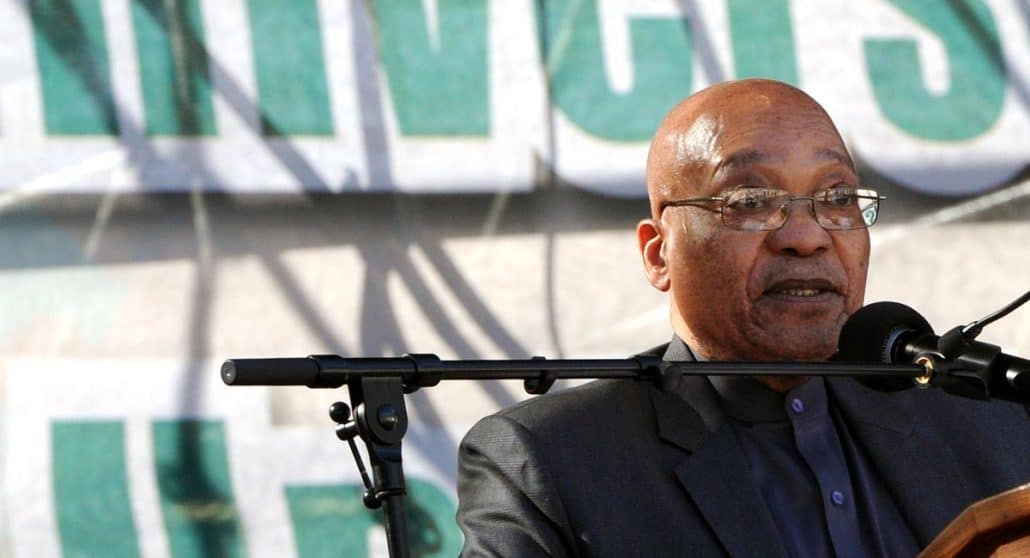President Jacob Zuma must now fork out nearly R8-million from his own pocket to pay a portion of the Nkandla costs – the Constitutional Court has approved this amount, submitted to it a month ago by the National Treasury.
On Tuesday the court’s registrar sent a letter to Webber Wentzel attorneys, the firm that handled Corruption Watch’s amicus curiae intervention in the case, stating that, with effect from the date of the letter, the court signifies “its approval of the amount of R7 814 155 as at June 2009 set out in the last paragraph of the report by National Treasury submitted to this court on 27 June 2016.”
Vlad Movshovich‚ a partner at Webber Wentzel‚ said it was in order for the court to do this, but would not comment otherwise until the firm had telephonically confirmed the court’s instruction.
On 31 March 2016 the court ordered the Treasury to give effect to the remedial action that was prescribed in the Public Protector’s Secure in Comfort report. The case, brought to the court by the EFF and DA, was an attempt to force Zuma to repay a portion of the public money spent on non-security upgrades at his private residence, Nkandla, in KwaZulu-Natal.
The Treasury submitted its report to the court on 27 June, a day before the deadline set by the court. Jacob Zuma’s portion of the Nkandla bill was R7.8-million, the Treasury had determined. This amount is the equivalent of three years’ presidential salary, and is 87.9% of the cost of the non-security features, as determined a panel of experts.
While it had not stipulated the methods the Treasury should use to arrive at that amount, or which experts should be involved in the assessment, the court still had to approve the amount. It has now done so and Zuma has 45 days within which to personally repay the money.
Pay back the money
In Secure in Comfort, outgoing public protector Thuli Madonsela found that Zuma had improperly benefited from upgrades that were paid for out of the public purse, but which were found to be not related to the security of the president and his family.
She recommended that the president repay a reasonable portion of the costs, to compensate taxpayers for the frivolous use of their money. Zuma resisted for months, repeatedly belittling the public protector and stating that her recommendations were not binding – until the Constitutional Court, in the DA/EFF case, found otherwise. Corruption Watch appeared before the court as amicus curiae in that case.
Having changed his mind in the face of irrefutable legal arguments from the applicants, Zuma later stated, unconvincingly, that he had always intended to pay back the money.
How did the Treasury do it?
The Times has provided a step-by-step explanation of how the Treasury arrived at this figure:
- Treasury had to first determine the reasonable costs of the non-security features.
- It had to determine the percentage of the cost that Zuma would be personally liable for.
- Two quantity surveying firms, each comprising three experts, were contracted to do the job. The firms had to work independently of each other.
- The Department of Public Works had to provide relevant electronic and hard copies of the construction and engineering drawings of the amphitheatre‚ cattle kraal‚ chicken run‚ visitors’ centre and swimming pool.
- Each firm visited the Nkandla residence, without having contact with each other during the process.
- A moderating panel was assigned to receive the reports by the two firms. The panel was made up of the CEOs of the South African Institute of Civil Engineering and Association of South African Quantity Surveyors respectively‚ two professional engineers, and two professional quantity surveyors‚ each of whom had at least 30 years of experience.
- In its study of the reports by two firms‚ the panel concluded on a view that that the only element of the five components in question that could be considered to be of a security nature was the control centre on the ground floor of the visitors’ centre.
- The panel also concluded that the reasonable costs of the five items amounted to R8 884 364 (including VAT) as at June 2009 and R11 753 758 (including VAT) as at May 2016‚ with an accuracy of ± 10%.
- Treasury accepted the reasonable cost determination from the panel and agreed that the amount that Zuma would have to pay personally would be 87.94%. This percentage corresponded to R7 814 155 as at June 2009.
According to the Treasury report, some of the requested drawings provided by the Department of Public Works were incomplete, incorrect or not reflective of what was actually built. These included drawings for the visitors’ centre, swimming pool and cattle kraal.
• Image of Jacob Zuma from Flickr

